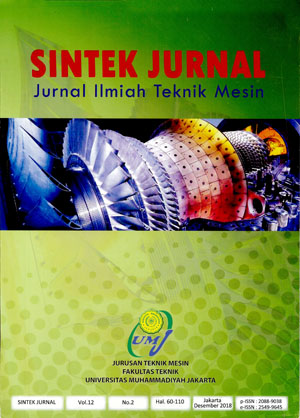EFEK PEMASANGAN ISOLATOR TERHADAP KONSUMSI BAHAN BAKAR LPG MESIN SANGRAI BIJI KOPI INDUSTRI KECIL
Main Article Content
Abstract
Article Details
- Articles published in SINTEK JURNAL are licensed under a Creative Commons Attribution-ShareAlike 4.0 International license. You are free to copy, transform, or redistribute articles for any lawful purpose in any medium, provided you give appropriate credit to the original author(s) and SINTEK JURNAL, link to the license, indicate if changes were made, and redistribute any derivative work under the same license.
- Copyright on articles is retained by the respective author(s), without restrictions. A non-exclusive license is granted to SINTEK JURNAL to publish the article and identify itself as its original publisher, along with the commercial right to include the article in a hardcopy issue for sale to libraries and individuals.
- By publishing in SINTEK JURNAL, authors grant any third party the right to use their article to the extent provided by the Creative Commons Attribution-ShareAlike 4.0 International license.
References
Budiharjo, Agus dan Sasongko., 2014, “Jaringan Pemasaran Kopi Rakyat di Kabupaten Jember”.
Burlian, Firmansyah dan Khoirullah, I.M., 2014, “Pengaruh Variasi Ketebalan Isolator Terhadap Laju Kalor dan Penurunan Temperatur Pada Permukaan Dinding Tungku Biomassa”. Seminar Nasional Mesin dan Industri (SNMI9)(2014).
DeWitt, Incropera., dan Lavine B., T.A, (2011), Fundamentals of Heat and Mass Transfer, 6th edition, John Wiley & Sons, Inc., New York.“Glasswool”. https://en.wikipedia.org/wiki/Glass_wool
Pemerintah Kabupaten Jember. “Si Hitam Yang Menjanjikan”.30September2012.http://jemberkab.go.id/si-hitam-yang-menjanjikan/. “Produk glass wool”. http://www.insulasi.com/produk-112-glasswool.html
Mintorogo, Widigdo dan Juniwati., 2013, “Efektivitas Styrofoam sebagai Isolator Panas pada Atap Miring di Surabaya”. Laporan Penelitian (2013).


